The term ‘aggregates‘ is a broad term for a material that is used for construction or building applications. This includes gravel, sands, crushed stone, etc.
If aggregates are produced using raw materials they are known as quarried aggregates or primary aggregates
Aggregates can also be produced by recycling demolition waste such a concrete and bricks. These are known as recycled aggregates or secondary aggregates.
They are used for a variety of construction purposes, including:
There are a number of stages in the quarrying process when producing construction aggregates. There are different steps for quarried and recycled materials.
Quarried Aggregates Process
1. Planning – To start a quarrying or mine plan will be created. This plan will look to map out the sites activities to ensure no unnecessary extraction is conducted.
2. Stripping – In order to gain access to the raw material the site needs to be stripped. This top layer of material is known as overburden. Removal of the top layer of material. This is known as overburden.
3. Extraction – Stone or material will be extracted using different techniques. This can include drilling holes, inserting explosives and blasting the rock or digging it straight from reserves if the material is soft enough
4. Transport – The extracted material needs to be transported to the processing area. This is known as ‘hauling’ ad is usually performed by a dump truck.
5. Processing – The raw materials are crushed and screened using specialist machines. This ensures the final product is the correct size. In some cases, further processing is need to produce different materials.
Recycled Aggregates Process
In order to preserve raw materials it’s important to use recycled aggregates where possible to reduce lifetime carbon emissions.
1. Waste – Recycled aggregates are usually produced using demolition wastes such as concrete or bricks.
2. Transport – The waste materials are transported to the processing site. This can be on the site of the waste material or to a specific recycling centre.
3. Processing – Just like in the quarried process the waste materials will be crushed and screened to the desired size.
One of the most common aggregate materials. Granite is a hard material that is frost-resistant, which is why it is often used in high-grade concrete. Granite aggregates are also used in the construction of roads. Due to its pleasant appearance, it is also used as a decorative aggregate and comes in a variety of colours.
Limestone is a sedimentary rock made of calcium carbonate. It is used for a variety of construction purposes such as a building material, a component in the production of concrete, and for the creation of roads. It’s also used to create Lime which can help to neutralise acidic soils.
Sandstone makes up about 20-25% of all sedimentary rock. It is composed of sand-sized grains, which means it has different levels of resistance to weathering. Although Gritstone, a type of sandstone, is extremely tough. It is commonly used as a building material or in asphalt concrete.
All of the above materials are quarried from the earth and are in limited supply. Aggregates can also be produced by recycling demolition wastes such as brick, hardcore, and concrete. Recycled Aggregates provide a sustainable and cheaper alternative to quarried materials.
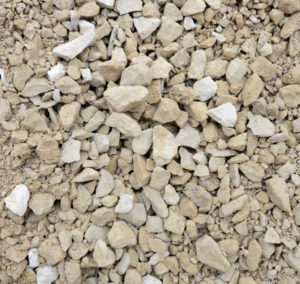 Type 1 Sub-base
Type 1 Sub-baseType 1 Sub-base or MOT Type 1 as it is commonly known, is an unbound granular material made by crushing rocks to a size between 0-40mm.
If the material is to be used on highway works it must comply with the Specification for Highway Works, Clause 803.
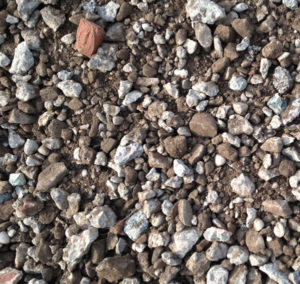 6F2 / 6F5 Capping
6F2 / 6F5 CappingAn unbound, well-graded aggregate that is produced by crushing rocks to a size of 0-75mm. This variety in particle size makes it strong under compaction.
It is often used to create development platforms where a sub-base along is not viable.
Read about the difference between 6F2 & 6F5 HERE
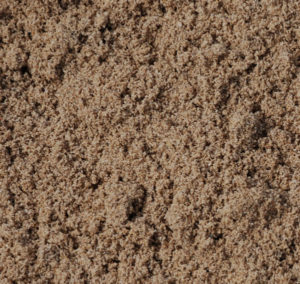 Sands
Sands There are a variety of different construction sands that are produced by crushing materials down to dust, this is often between 0-5mm in particle size.
Types of sand include building sand, grit sand & fill sand, which can be used for: Backfill, Brick Laying, Capping, Ducting, Sub-bases, Rendering, and Screeding.
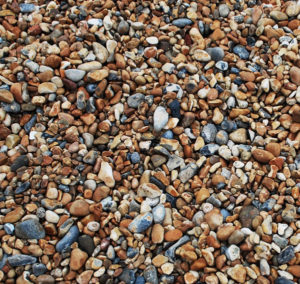 Pipe Bedding
Pipe BeddingAs the name suggests Pipe Bedding is used as a bedding layer for pipes. It’s produced by screening crushed rock into single sizes, usually between 10mm & 20mm.
The uniform size allows water to pass through easily, making it great for drainage usage.
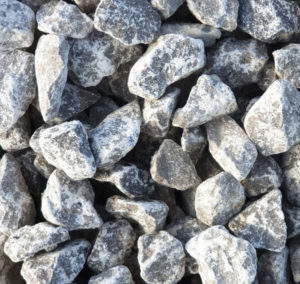 Clean Stone
Clean StoneClean stone is a coarse aggregate that has been screened to remove any fines. It is often supplied either at 45mm single size or 75mm single size.
It can be used as a subbase for areas that require good land drainage or as a bedding layer for utilities.
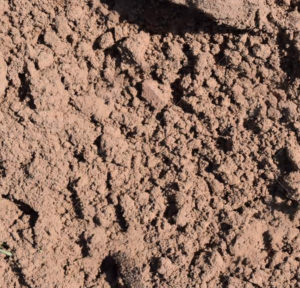 Clay
ClayAlso referred to as engineering clay, clay is an impermeable material which means water is unable to pass through it.
It is mainly used to line ponds/water features or landfill cells. Depending on the quality of the clay it is also used by brick manufacturers to produce bricks.
GMAT is a reliable supplier of quarried and recycled aggregates to construction projects across the UK. Email us for a competitive rate at info@gmat.co.uk or call 0161 647 7409.